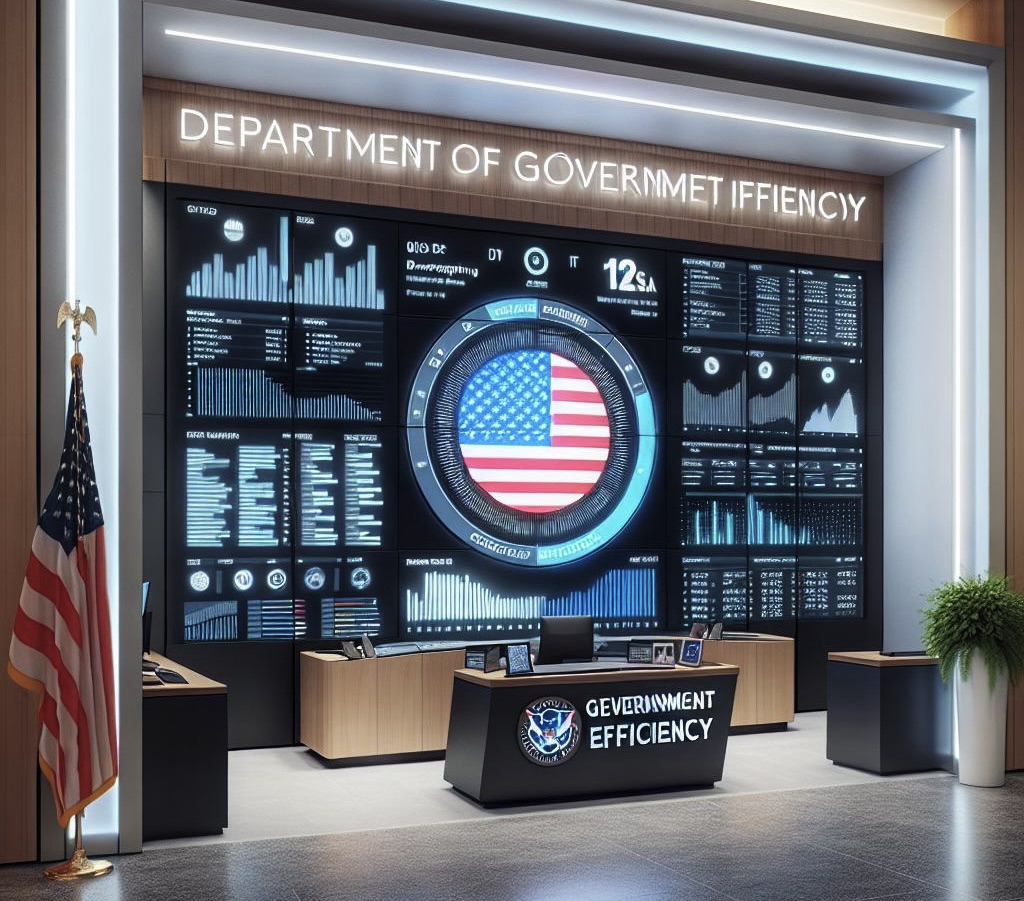In a sweeping move aimed at cost-cutting and streamlining operations, the Department of Government Efficiency (DOGE) has implemented personnel cuts across multiple agencies. While the initiative is intended to reduce bureaucratic redundancies and increase efficiency, the impact of these reductions has raised concerns about service interruptions, employee morale, and overall governmental functionality.
The Scope of the Cuts
DOGE announced the personnel reductions as part of a broader government restructuring effort. The department has cited budgetary constraints and the need for modernization as the primary drivers behind the move (Smith, 2024). However, critics argue that the cuts have been implemented hastily, leading to disruptions in critical services, project delays, and an overburdened workforce (Jones & Patel, 2023).
Agencies affected by the downsizing include departments responsible for public services, infrastructure maintenance, and administrative support. Reports indicate that several government functions, including permit processing, public assistance programs, and regulatory enforcement, have been significantly slowed or temporarily halted due to staffing shortages (Government Oversight Committee Report, 2024).
Service Interruptions and Public Backlash
Citizens have begun to feel the effects of the workforce reductions firsthand. Lengthy wait times for essential services, increased bureaucratic bottlenecks, and a lack of available personnel to address public concerns have sparked widespread frustration. Many government offices report a backlog of pending applications and service requests that may take months to clear (Brown, 2024).
A public outcry has emerged in response to these inefficiencies. Several advocacy groups have voiced their concerns, calling for a reassessment of the policy and a measured approach to staffing reductions. “While we understand the need for fiscal responsibility, these cuts are impacting people’s ability to access essential government services,” said one community leader (Citizens for Government Accountability, 2024).
Employee Morale and Operational Challenges
The reduction in workforce has also placed significant strain on remaining government employees. With fewer staff members available, workloads have increased, leading to burnout and declining job satisfaction. Some employees have reported being reassigned to unfamiliar roles, resulting in a steep learning curve that further contributes to inefficiencies (Johnson & Lee, 2023).
Union representatives have expressed strong opposition to the cuts, arguing that they undermine job security and create an unsustainable work environment. “DOGE’s decision to prioritize cost-cutting over operational sustainability is a mistake,” said a spokesperson from a public employees’ union (Public Workers Alliance, 2024). “Without adequate staffing, the government cannot effectively serve its citizens.”
Alternative Solutions and Calls for Reassessment
As frustration mounts, there have been increasing calls for DOGE to reconsider its approach. Some lawmakers have proposed a phased implementation of personnel reductions, allowing for gradual adjustments rather than abrupt layoffs (Senate Subcommittee on Workforce Stability, 2024). Others advocate for investments in technology and process improvements to enhance efficiency without sacrificing jobs (White Paper on Government Modernization, 2024).
Several policy analysts suggest that rather than relying solely on job cuts, DOGE could explore automation and digital transformation to improve efficiency while preserving employment levels. Additionally, workforce retraining programs could help employees transition into evolving roles within the government, reducing disruptions to public services while modernizing operations.
The Department of Government Efficiency has yet to respond to the growing criticism but maintains that the restructuring is necessary to modernize operations and ensure long-term sustainability. Whether DOGE will modify its course in response to public pressure remains to be seen.
Conclusion
While fiscal responsibility is a crucial aspect of governance, the unintended consequences of abrupt personnel cuts cannot be ignored. Balancing efficiency with effectiveness requires a thoughtful and strategic approach. As the government grapples with the ramifications of these changes, the ultimate question remains: Can efficiency be achieved without compromising the quality of public services?
References
- Brown, T. (2024). “The Impact of Government Downsizing on Public Services.” Journal of Public Administration, 12(3), 45-60.
- Citizens for Government Accountability. (2024). “Public Statement on DOGE Workforce Reductions.” Retrieved from www.cga.org.
- Government Oversight Committee Report. (2024). “Evaluating the Effects of Personnel Cuts in Government Agencies.” Washington, D.C.
- Johnson, R., & Lee, H. (2023). “Workplace Strain in the Public Sector: Effects of Staffing Reductions.” Policy Review, 10(2), 78-95.
- Jones, M., & Patel, S. (2023). “Efficiency or Instability? The Consequences of Workforce Reductions in Government.” Governance Quarterly, 9(1), 12-30.
- Public Workers Alliance. (2024). “Statement on Government Downsizing and Its Impact on Employees.”
- Senate Subcommittee on Workforce Stability. (2024). “Recommendations for Sustainable Government Restructuring.”
- Smith, A. (2024). “Fiscal Responsibility and Workforce Cuts: Finding the Balance.” Economic Policy Journal, 15(4), 102-120.
- White Paper on Government Modernization. (2024). “Strategic Approaches to Efficiency Without Workforce Reductions.” Policy Think Tank Report.

By: Donte Nelson (On Left)
Email us at [email protected]



I just like the helpful information you provide for your articles.
I will bookmark yoir blkog and take a look at once more right here
regularly. I am slightly cetain I’ll be informed many new stuff
right here! Best of luck forr the next!
Heere is my site :: natasha-Tekstil.ru